 | |
| Categories | Literary magazine |
|---|---|
| Frequency | Monthly |
| First issue | 15 July 1966 |
| Final issue | 26 July 2016 |
| Country | Indonesia |
| Language | Indonesian |
| Website | www |
| ISSN | 0125-9016 |
Horison (Horizon) was a monthly literary magazine in Indonesia.
 | |
| Categories | Literary magazine |
|---|---|
| Frequency | Monthly |
| First issue | 15 July 1966 |
| Final issue | 26 July 2016 |
| Country | Indonesia |
| Language | Indonesian |
| Website | www |
| ISSN | 0125-9016 |
Horison (Horizon) was a monthly literary magazine in Indonesia.
Horison was founded in 1966 and originally run by the Indonesian Foundation (Yayasan Indonesia). The first issue of the magazine was published on July 1966.
The idea to create such a magazine belonged to the writer and publicist Mochtar Lubis. The first editorial board consisted of Mochtar Lubis, HB Jassin, Zaini, Taufik Ismail, Arief Budiman (Su Haw Hin), D.S. Muliano. [1]
The magazine advocates the freedom of creativity of writers, the diversity of literary forms and genres, encourages the development of young talents.
Such well-known Indonesian writers and poets as Umar Kayam, Danarto, Arswendo Atmovilito, Sutardji Calzoum Bachri, Darmanto, Abdul Hadi WM and others expressed themselves for the first time in this magazine. [2]
Initially, the magazine was dominated by works with a clear political background, since the mid-1970s - mainly by the avant-garde works (Sutardji Kalzum Bahri, Putu Wijaya, Ikranegara, Danarto).
In the years 1966-1975, it was the only established literary magazine in the country. The publication in it was a recognition of the literary talent of a writer or a poet. In the 1980s many prominent writers moved away from the magazine, although its publication continues thanks to the efforts of Taufiq Ismail and the writers of his circle.
Since 1996, the magazine has an appendix "Kakilangit" (Horizon) destined for students and teachers of literature. [3]
Since July 2016, the transfer from paper to electronic format edition was started. There are four sections in it: poetry, short story, essays, criticism. [4]
I Gusti Ngurah Putu Wijaya is an Indonesian author, considered by many to be one of Indonesia's most prominent literary figures. His output is impressive; his published works include more than thirty novels, forty dramas, a hundred short stories, and thousands of essays, articles, screenplays and television dramas, and he has been the recipient of a number of literary prizes.
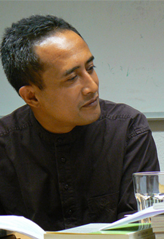
Agus R. Sarjono is an Indonesian poet and author. In 1988, he graduated from Department of Indonesian Literature of IKIP Bandung, and then finished his postgraduate program in Universitas Indonesia at the faculty of literature and cultural studies in 2002.
Ahmadun Yosi Herfanda, is an Indonesian journalist and poet. His name is also written as Ahmadun YH, Ahmadun Y. Herfanda, Ahmadun Herfanda, or AYH (ayeha). Ahmadun's poetry focuses on social and religious themes and is informed by Sufism. He is a reporter and arts editor at the daily newspaper Republika. Now he is known as a famous Indonesian poet and writer.

Indonesian literature is a term grouping various genres of South-East Asian literature.
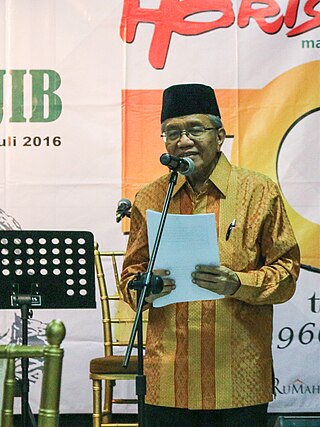
Taufiq Ismail is an Indonesian poet, activist and the editor of the monthly literary magazine Horison. Ismail figured prominently in Indonesian literature of the post-Sukarno period and is considered one of the pioneers of the "Generation of '66". He completed his education at the University of Indonesia. Before becoming active as a writer, he taught at the Institut Pertanian Bogor. In 1963, he signed the "Cultural Manifesto" as a document that opposed linking art to politics. This cost him his teaching position at the Institut.
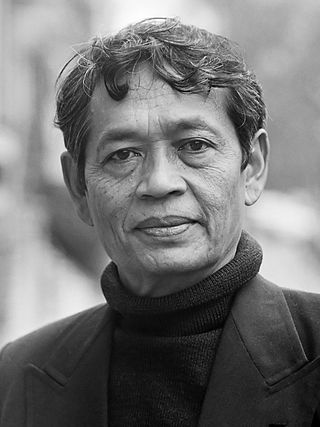
Mochtar Lubis was an Indonesian journalist and novelist who co-founded Indonesia Raya and monthly literary magazine Horison. His novel Senja di Jakarta was the first Indonesian novel to be translated into English. He was a critic of Sukarno and was imprisoned by him, as well as by Suharto on several later occasions. He held strong anti-leftist views and was seen by critics as aligned with military and pro-US forces that were opposed to Sukarno’s non-aligned policies, a charge that he himself denied.
Danarto was an Indonesian writer and artist. His father was Jakio Harjodinomo, a sugar factory foreman. His mother, named Siti Aminah, was small batik trader in the market. His work is well known; especially a collection of short stories: Godlob. Another collection of short stories, Adam Ma'rifat, won the Literature Prize of the Dewan Kesenian Jakarta in 1982. In 2009 Danarto accepted the Ahmad Bakrie Award for literature.
Indonesia Raya was an Indonesian newspaper co-founded in 1949 by Mochtar Lubis. Before its permanent closure in 1974, it was banned numerous times during the Sukarno and Suharto governmental period.

Jalan Tak Ada Ujung is an Indonesian novel by Mochtar Lubis first published by Balai Pustaka in 1952. It takes place during the Indonesian war of independence and tells the story of Guru Isa, a schoolteacher who assists the guerrilla freedom fighters yet lives in fear.
Senja di Jakarta is an Indonesian novel written by Mochtar Lubis and first published in English by Hutchinson & Co. in 1963, with a translation by Claire Holt. It was later published in Indonesian in 1970.

Hans Bague Jassin, better known as HB Jassin, was an Indonesian literary critic, documentarian, and professor. Born in Gorontalo to a bibliophilic petroleum company employee, Jassin began reading while still in elementary school, later writing published reviews before finishing high school. After a while working in the Gorontalo regent's office, he moved to Jakarta where he worked at the state publisher Balai Pustaka. After leaving the publisher, he attended the University of Indonesia and later Yale. Returning to Indonesia to be a teacher, he also headed Sastra magazine. Horison, a literary magazine, was started in July 1966 by Jassin and Mochtar Lubis as a successor to Sastra, and was edited by Taufiq Ismail, Ds. Muljanto, Zaini, Su Hok Djin, and Goenawan Mohamad. In 1971, Jassin was given a one-year prison sentence and a two-year probation period because as the editor of Sastra, he refused to reveal the identity of an anonymous writer who wrote a story which was considered by the court to be blasphemous.

Iwan Martua Lokot Dongan Simatupang, more commonly known as Iwan Simatupang was an Indonesian novelist, poet and essayist.

Floribertus Rahardi is a poet and a journalist.

Korrie Layun Rampan was an Indonesian novelist, short story writer, poet, literary critic, journalist, and politician.
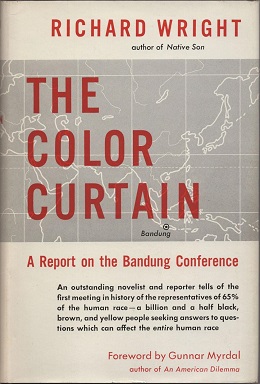
African-American author Richard Wright's book The Color Curtain: A Report on the Bandung Conference is based on his impressions and analysis of the postcolonial Asian-African Conference, which was a gathering of representatives from 29 independent Asian and African countries, held in the city of Bandung, Indonesia, April 18–24, 1955. In addition to drawing on its author's experience as a reporter at the conference, The Color Curtain bases its analysis of the postcolonial world on Wright's interactions with several modern Indonesian writers and intellectuals. Since its publication in 1956, Wright's Indonesian travelogue has been a prominent first-hand account of the Bandung Conference.
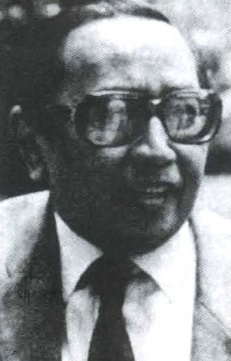
Suardi Tasrif was an Indonesian journalist, writer, and advocate. He became active in journalistic endeavors starting in the Indonesian National Revolution, and led the prominent newspaper Abadi during the Sukarno period since its founding in 1951 until its ban in 1960. He moved into advocacy during the New Order era, lobbying for legal reform in the Suharto regime's early years and becoming a prolific writer on legal and political matters. He has also contributed to the code of ethics of both the journalistic and advocacy professions in Indonesia.
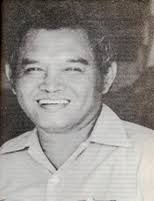
Raden Hoerip Satyagraha Prawirodihardjo, popularly known as Oyik, was an Indonesian writer and journalist. He was mostly renowned for his short stories, some of which were set in the Indonesian mass killings of 1965–1966.
Taufiq is a given name. Notable people with the name include:
Mochtar Pabottingi was an Indonesian political science researcher, editor, essayist, novelist, and poet. He was a main researcher of national political development at the Indonesian Institute of Sciences (LIPI).